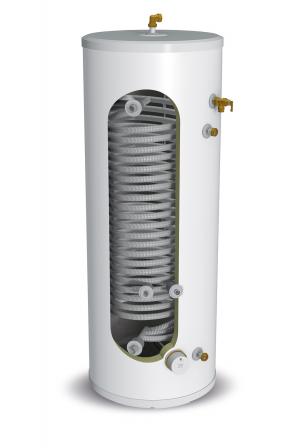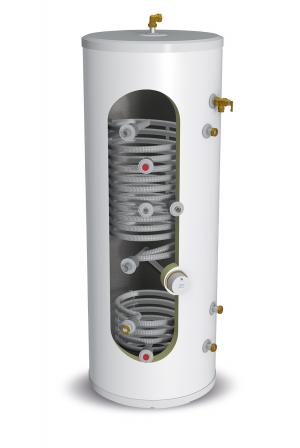 The UK’s drive towards Net Zero by 2050 is becoming a fast reality, with the forthcoming introduction of the 2025 ‘Future Homes standard’, Britain’s house builders are looking at alternative solutions to heat our homes and our domestic hot water. Embracing technologies such as heat pumps are expected to become the standard appliance for domestic heating and hot water in the majority of new homes in the future.
The UK’s drive towards Net Zero by 2050 is becoming a fast reality, with the forthcoming introduction of the 2025 ‘Future Homes standard’, Britain’s house builders are looking at alternative solutions to heat our homes and our domestic hot water. Embracing technologies such as heat pumps are expected to become the standard appliance for domestic heating and hot water in the majority of new homes in the future.
Heat pumps will require an unvented cylinder that is specifically designed to work with this technology. Neil Overton, Sales Director at Gledhill, discusses how cylinders can be the perfect partner in sustainable solutions.
Legislation needs
In order to support the government’s commitment to Net Zero, there needs to be a shift towards renewable technologies across the HVAC sector.
To accommodate hot water cylinders within New Build properties, there are certain considerations that require further thought. New technologies such as heat pumps need domestic hot water cylinders which will require more space than the traditional combi-boiler. Solar Photovoltaic and solar thermal systems both need a way to store the energy they create which again means that hot water cylinders or thermal stores need to be factored into new build properties. Legislation and building regulations have often been used to help guide developers through incorporating efficiency changes. We can see this continuing with the Interim Part L arriving in December 2021, for implementation in 2022, and followed by the Future Homes Standard in 2024 for implementation in 2025.
Installation: What you need to know
There are many things that installers will need to consider when installing a heat pump and a hot water cylinder.
Firstly, heat pumps give us the opportunity to make the way we heat our domestic hot water even more efficient. At Gledhill we have designed highly efficient domestic hot water cylinders that work specifically with low temperature heat pumps by combining a larger heat exchange for maximum heat transfer, with new thermostatic control integration, ensuring reliable and hot domestic hot water.
Secondly, it is vital that the right size of cylinder has been specified for the installation. Increasing the size of the domestic hot water cylinder for low carbon technology enables you to store more usable hot water but also ensures that the hot water is heated as efficiently as possible.
 The Perfect Partner
The Perfect Partner
Gledhill’s StainlessLite Plus heat pump cylinder model is supplied with an immersion heater tapping and a thermostat pocket. It is recommended that a thermostat is fitted which brings the immersion heater on at a temperature just below the heat pump maximum and switches off at 60 or 65°C. In this way, the use of direct electricity is minimised and most of the water heated is achieved through the heat pump.
Gledhill, experts in hot water cylinders and renewable solutions have produced an unvented stainless-steel cylinder specifically for heat pump applications providing mains pressure domestic hot water. By utilising Gledhill’s StainlessLite Plus unvented hot water cylinder, this product has been developed to maximise the lower temperatures available from the heat pump.
